Liquidity Pools Explained: The Full Breakdown of How Allbridge Core Works
Allbridge Core is a cross-chain protocol that enables seamless transfers of stablecoins like USDT and USDC across a wide range of supported blockchains — including EVM networks, Solana, Tron, Sui, and others.
At its core, Allbridge follows a concept familiar to many in DeFi: liquidity pools that allow assets to be swapped based on a stable swap formula. But instead of maintaining a single pool with multiple assets on one chain, Allbridge Core distributes these pools across different blockchains. Each pool holds a single stablecoin, and they’re connected through a cross-chain messaging system that allows value to move from one chain to another.
To support this model, Allbridge Core introduces an internal mechanism that behaves like a virtual stable swap — enabling users to swap stablecoins across chains without relying on wrapped assets or centralized custody.
In this article, we’ll break down how the system works:
- how liquidity pools are structured and how a virtual token called vUsd is used internally,
- what actually happens during a cross-chain transfer,
- how the pools stay balanced, and
- how liquidity providers (LPs) earn rewards in real time.
We’ll also address common questions like:
- Why do some swaps offer better rates than others?
- What causes pool imbalances?
- How does Allbridge Core maintain long-term equilibrium without external intervention?
Let’s begin with the foundation: how liquidity pools are structured in Allbridge Core, and why vUsd is key to making cross-chain swaps possible.
-2e0f7dfb-e96b-4a3e-a6ed-785de0ae4296.jpeg)
Single-Token Liquidity Pools and the Role of vUsd
In traditional stable swap protocols, a liquidity pool usually holds two or more assets — for example, USDC and USDT — and users swap between them using an invariant-based pricing formula that keeps the pool balanced. Allbridge Core builds on the same principle, but adapts it for the cross-chain world.
One Pool Per Asset, Per Chain
Instead of a single pool containing multiple tokens, Allbridge Core maintains one liquidity pool per asset on each supported chain. So on Ethereum, for instance, there may be a USDT pool; on Solana, a separate USDC pool; on Sui, another USDC pool — and so on. These pools are not directly connected by tokens, but they are linked logically through a system of cross-chain communication and virtual accounting.
To enable stable swap behavior within these single-token pools, Allbridge Core introduces a special internal concept: vUsd.
What Is vUsd?
vUsd is a virtual token — a purely internal unit of account that doesn’t exist on-chain as a real asset, isn’t transferrable, and doesn’t follow any token standard like ERC-20 or SPL. But it plays a critical role in simulating swap behavior between tokens that reside on different chains.
Whenever a user deposits stablecoins into a liquidity pool, Allbridge Core treats that deposit as a combination of two components:
- Half remains in the form of the original stablecoin (e.g. USDT).
- Half is treated as a virtual vUsd balance (essentially “minting” vUsd using half of the stable coin deposit as a collateral)
This internal split allows the pool to mimic a two-asset swap mechanism — using the stablecoin and vUsd as the two sides of the equation. The invariant formula then governs how one is exchanged for the other.
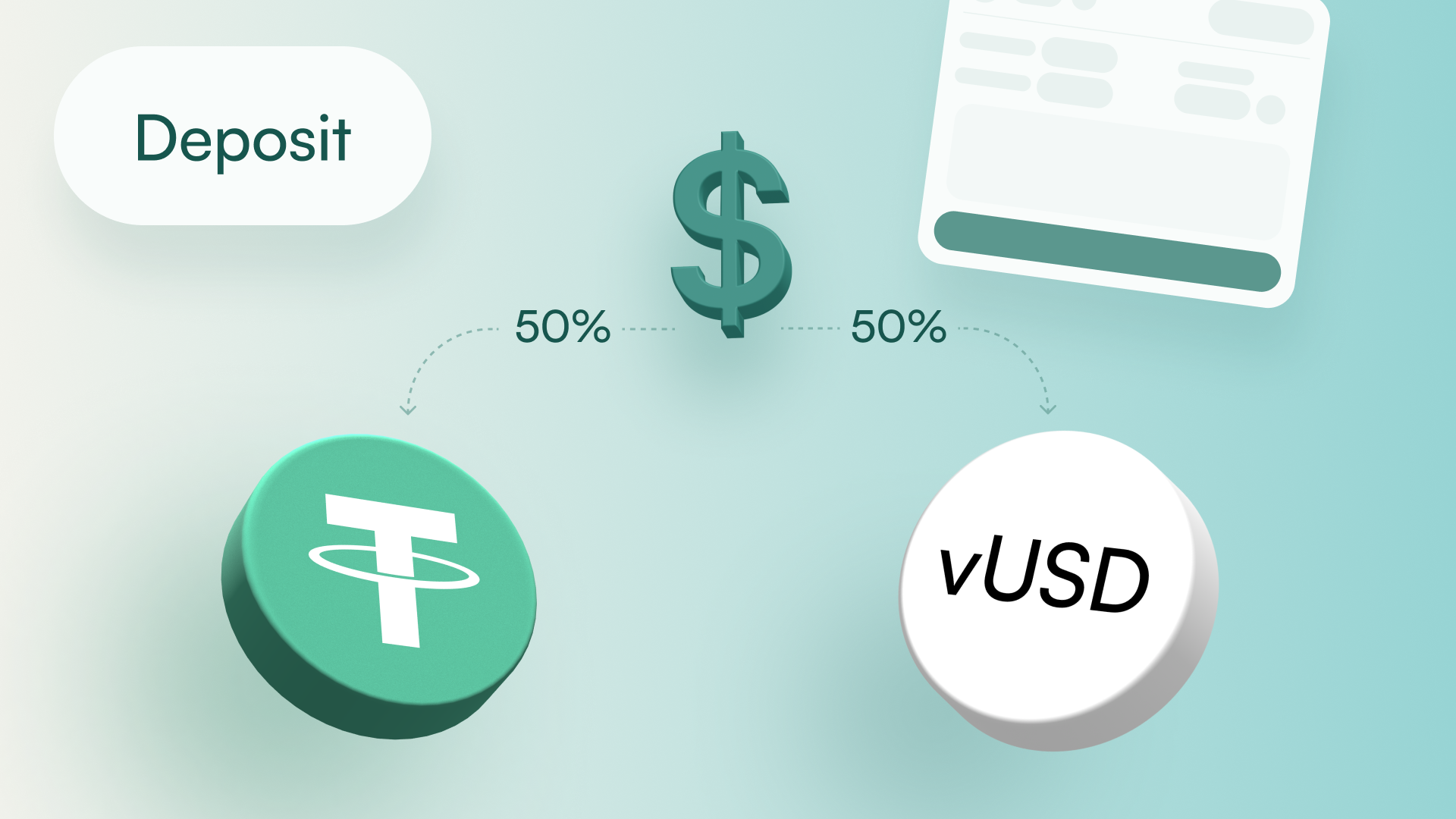
This design allows Allbridge Core to track the “price” of the stablecoin in terms of vUsd, and vice versa, even though only one real asset exists in the pool. The result: a familiar swap logic, extended across multiple chains using a virtual internal asset.
In the next section, we’ll look at how this virtual token enables actual cross-chain transfers — and how swapping stablecoins between chains is really a two-step process involving vUsd under the hood.
Cross-Chain Transfers: What Really Happens
When you bridge a stablecoin using Allbridge Core, the process might appear as a simple transfer from one chain to another. In reality, it’s a coordinated swap between two independent liquidity pools — powered by internal accounting and cross-chain messaging.
Here’s how it works:
Step 1: Swap on the Source Chain
Your stablecoin (e.g. USDT) is deposited into the liquidity pool on the source chain. Internally, this triggers a swap between the token and vUsd — the virtual token used for internal balance tracking. The pool’s real stablecoin balance increases, while the vUsd balance decreases.
The resulting vUsd amount represents the value you’re sending across chains.
Step 2: Cross-Chain Message
The vUsd amount is sent — not as a token, but as a message — to the destination chain. This message tells the destination pool how much value to release.
Step 3: Swap on the Destination Chain
On the destination chain, the incoming vUsd amount is swapped into the local stablecoin (e.g. USDC). The pool’s vUsd balance increases, and the stablecoin is withdrawn to the user’s address.
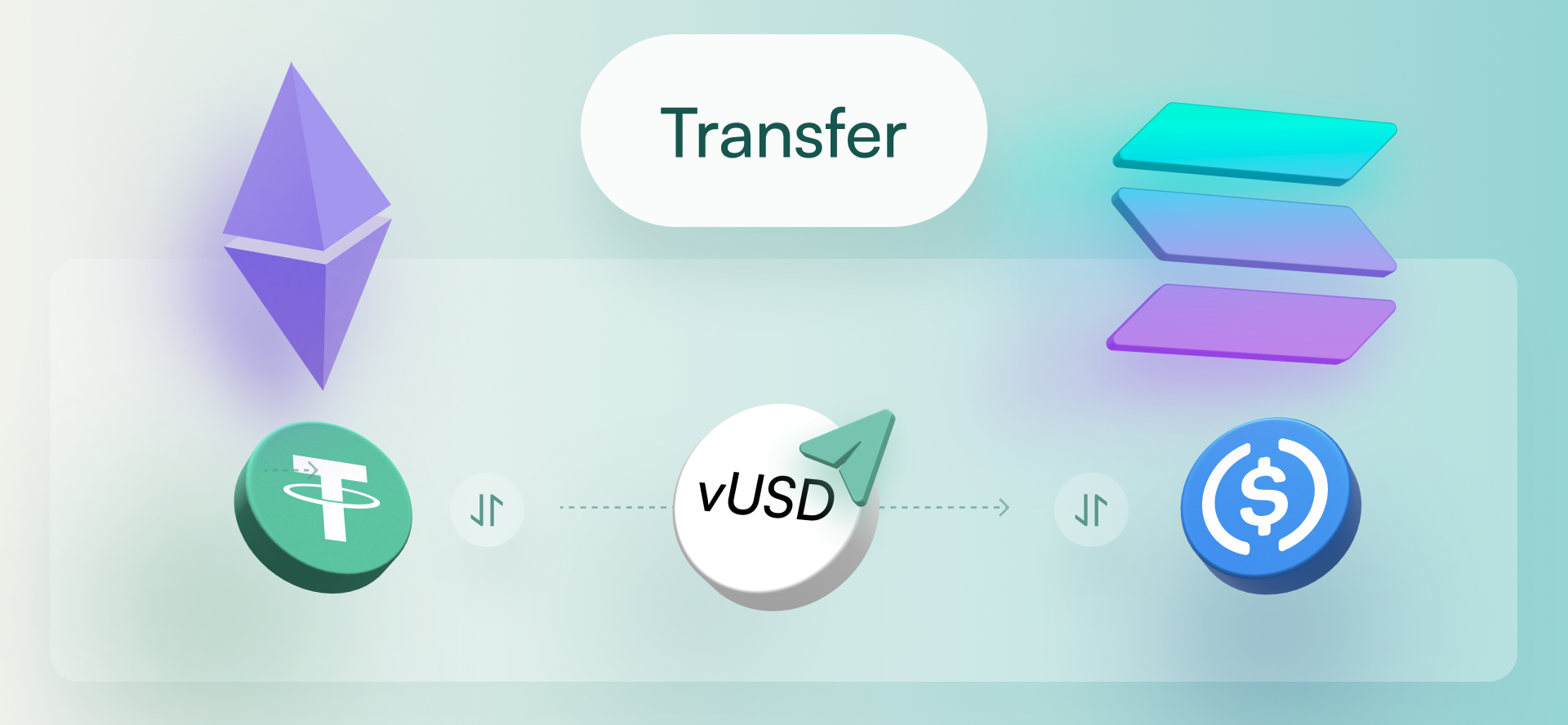
To the user, this looks like a direct token transfer. Internally, it’s a pair of coordinated swaps — one on each end — using vUsd to carry value across chains. This design keeps the pools separate per chain while enabling dynamic pricing based on supply and demand in each location.
Next, we’ll explore what happens when transfers mostly flow in one direction — and how Allbridge Core handles imbalances through pricing shifts and arbitrage.
Pool Imbalances and Dynamic Pricing
Since each liquidity pool in Allbridge Core exists independently on its own chain, cross-chain transfers can gradually shift the balance of assets between them. When more transfers happen in one direction than the other, an imbalance starts to build.
What Causes the Imbalance?
Imagine many users bridging USDT from Ethereum to Solana. The Ethereum pool keeps receiving USDT, while the Solana pool keeps sending it out. Over time:
- The Ethereum pool accumulates more stablecoins and has relatively less vUsd.
- The Solana pool has more vUsd and fewer stablecoins.
Because of this shift, the internal exchange rate between vUsd and the stablecoin changes.
- On Ethereum, stablecoin becomes cheaper in terms of vUsd.
- On Solana, stablecoin becomes more expensive.
This happens automatically — the pricing follows a stable swap curve, adjusting the swap rate based on the ratio between vUsd and the real token in the pool.
Why This Is a Good Thing
This pricing shift opens up arbitrage opportunities. For example:
- A trader could now bridge USDC from Solana to Ethereum, where the same stablecoin might be worth more on arrival.
- By doing so, they profit from the price difference — and in the process, help restore balance to both pools.
This self-correcting mechanism is by design — it encourages organic rebalancing of liquidity without the need for centralized intervention.
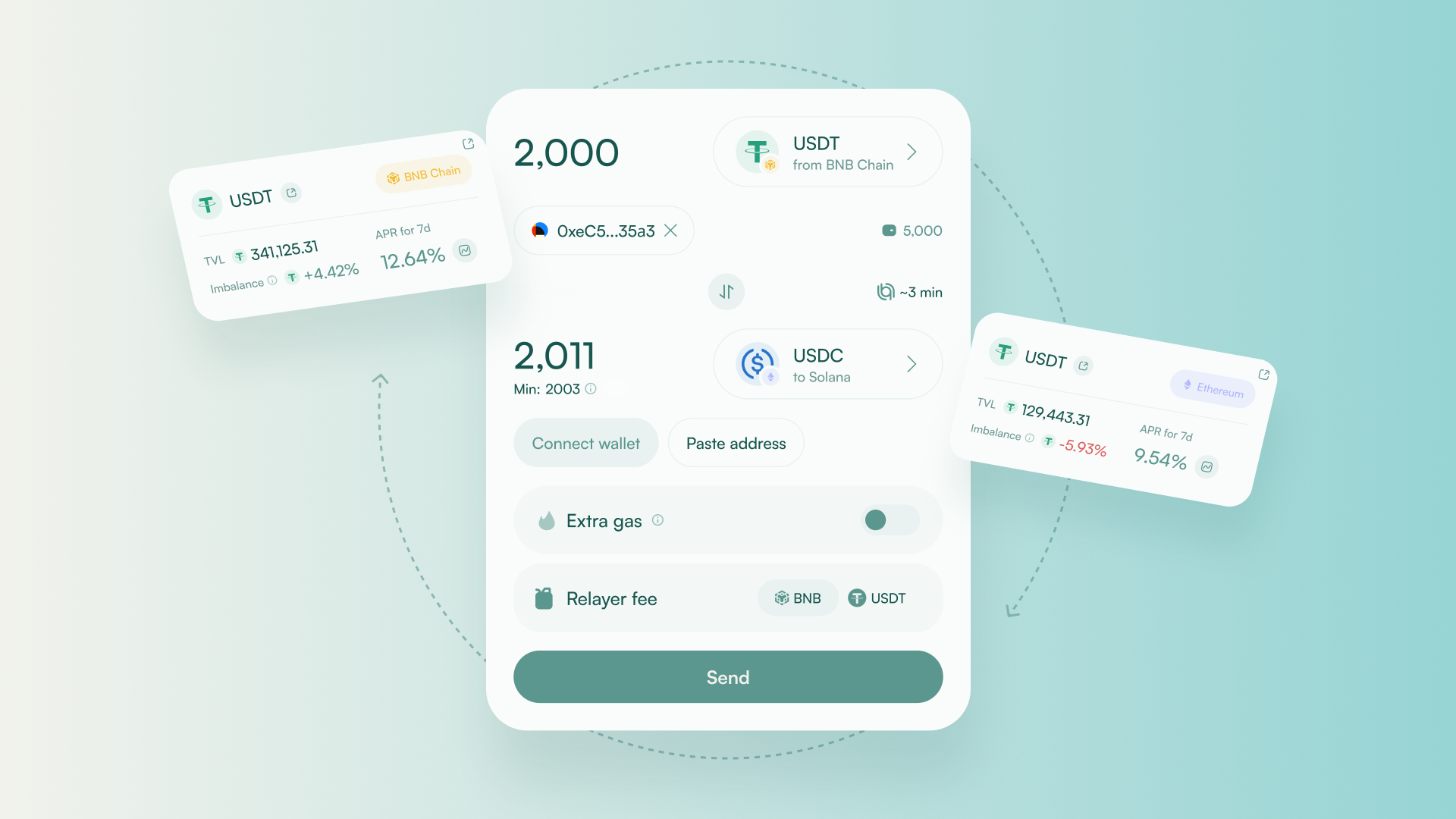
Imbalances also explain why you may sometimes see slightly different swap rates depending on the direction of your transfer. It’s not a bug or fee issue — it’s the result of real-time supply and demand across chains, and a core feature of how value remains balanced over time.
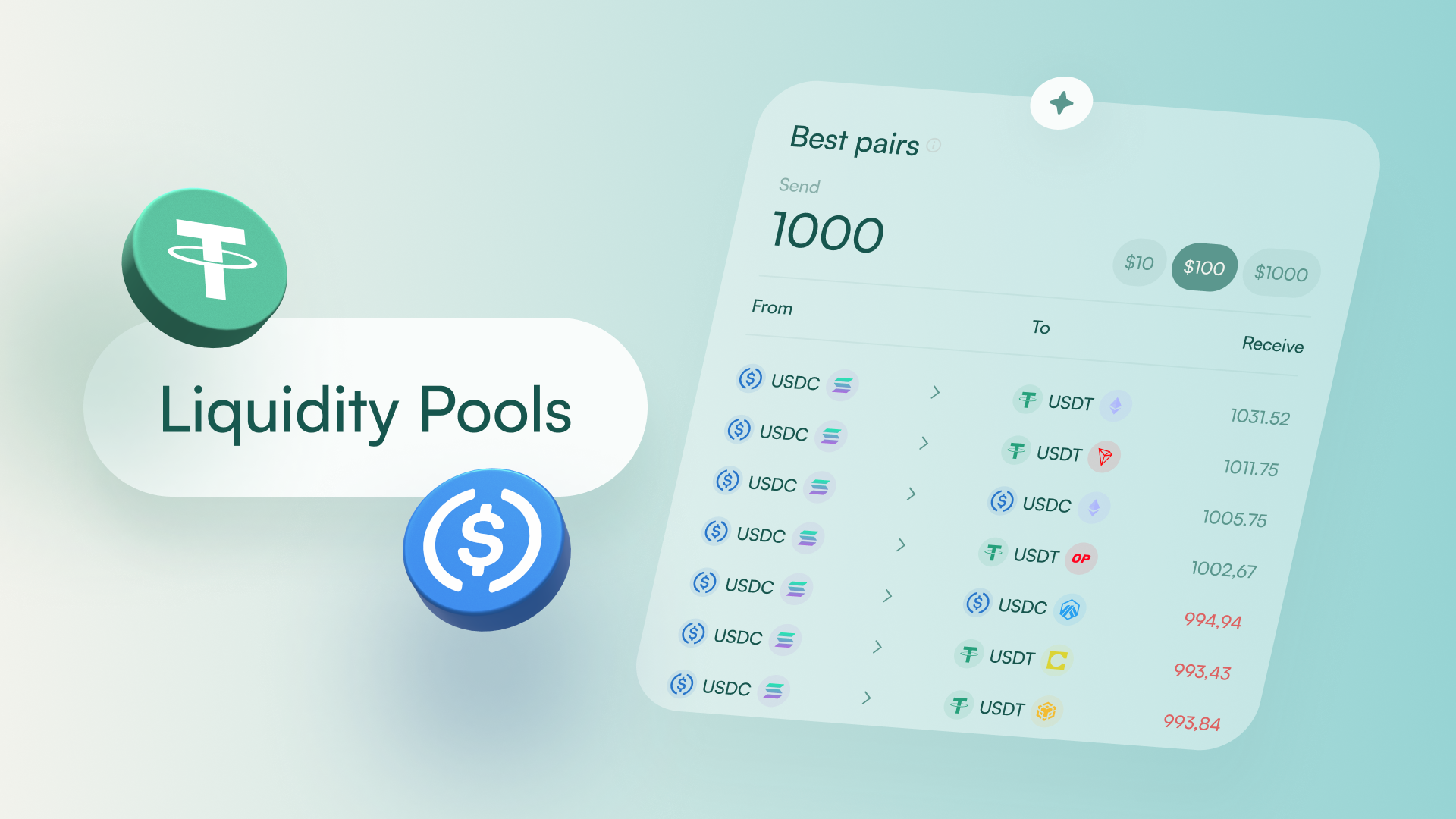
In the next section, we’ll look at how this activity translates into real-time rewards for liquidity providers — and why yields can vary from pool to pool.
How LPs Earn Rewards (And Why APYs Fluctuate)
Liquidity providers (LPs) play a key role in the Allbridge Core ecosystem. By depositing stablecoins into pools on supported blockchains, they supply the liquidity needed to execute cross-chain transfers. Without these funds in place, there would be no tokens available to deliver on the destination chain when a user bridges.
In return for this service, LPs earn a share of the protocol’s transaction fees.
Fee-Based Rewards, Earned Per Transfer
Every time a cross-chain transfer takes place, a fee is applied on both the source and destination chains — during each of the two internal swaps.
80% of each swap fee is distributed to the liquidity providers in the corresponding pool.
- LPs in the source pool earn rewards from the fee applied during the initial swap (stablecoin to vUsd).
- LPs in the destination pool earn rewards from the fee applied during the final swap (vUsd to stablecoin).
These rewards accumulate with every transfer that uses a pool you’ve contributed to. They are tracked separately from your liquidity and must be claimed manually.
Why APYs Vary Over Time
The estimated APYs shown in the Allbridge Core UI are based on recent performance — calculated over a 7-day or 30-day window. These are not fixed or promised yields. Since rewards depend on actual transfer activity, any changes in volume will affect the yield.
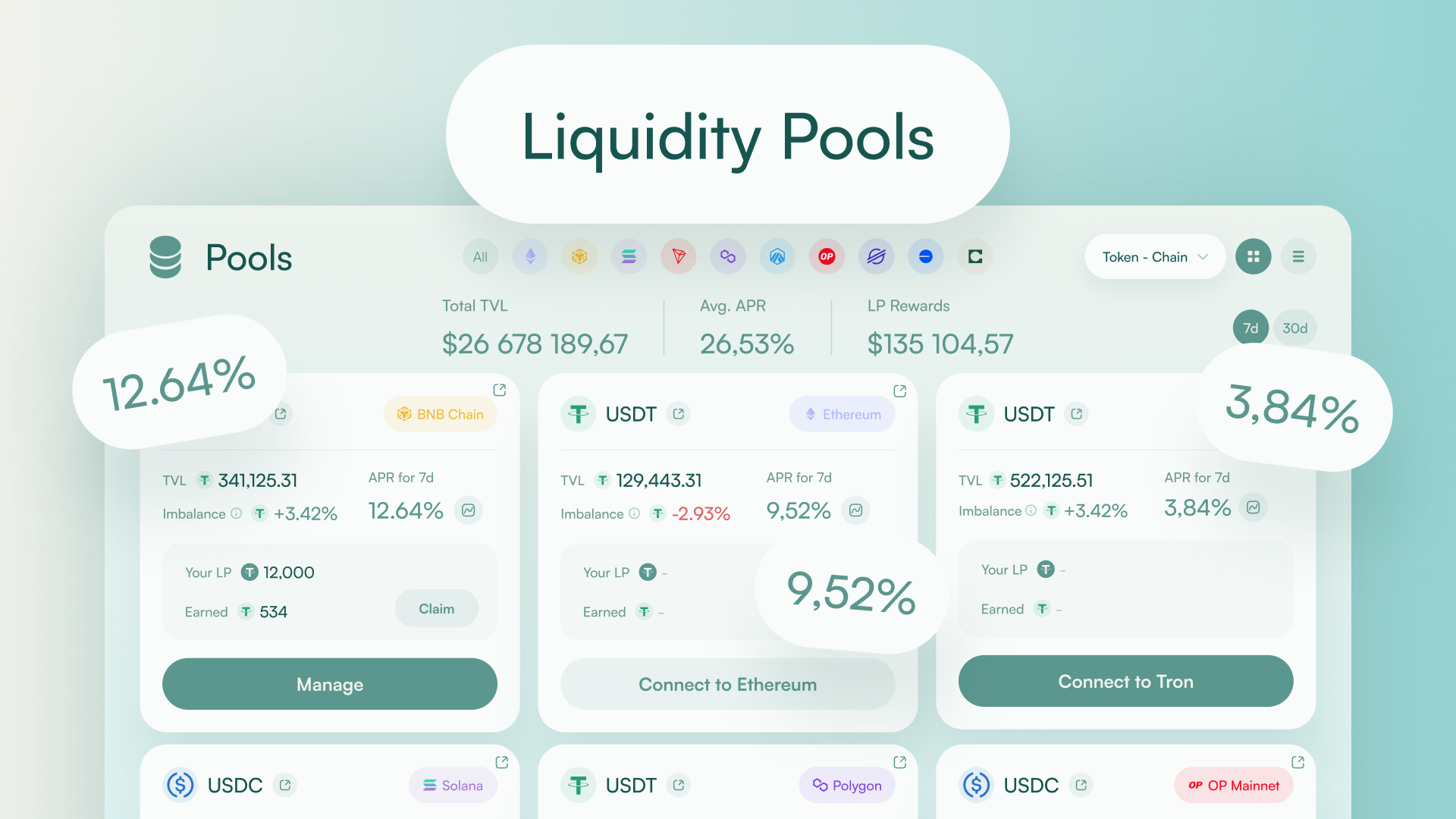
If volume increases on a given pool, its APY will rise (assuming liquidity stays the same). If volume drops, so does the reward rate. This makes APYs naturally dynamic and reflective of real-time usage.
How Liquidity Adapts to Yield
Over time, LP behavior tends to balance yields across pools:
- If a smaller pool starts seeing more activity, its APY will rise. This attracts more LPs, which increases the pool’s total size (TVL). As liquidity grows, the yield becomes more diluted and eventually stabilizes.
- On the other hand, a large pool with low volume may show decreasing yields. This can lead to LPs withdrawing funds. As liquidity drops, the APY improves (if volume remains steady), eventually reaching a new equilibrium.
In this way, liquidity naturally flows toward pools where it’s most needed — guided by the incentives built into the system.
Allbridge Core doesn’t try to set or control APYs. Instead, it lets volume and market activity determine yields — with rewards distributed transparently and proportionally to those who contribute liquidity where it’s in demand.
Up next: a final recap of how the entire system works together — and why this model is both efficient and sustainable for cross-chain stablecoin transfers.
Conclusion: Why This Model Works
Allbridge Core extends stable swap principles into the cross-chain space with a design that stays decentralized, market-driven, and transparent. Liquidity providers support the system by enabling stablecoin transfers between chains, and in return, they earn real-time rewards based on actual usage — no lockups, no artificial incentives.
When pool imbalances arise, the protocol doesn’t rely on intervention. Instead, it uses pricing shifts to create opportunities — encouraging users to bridge in the opposite direction and restore balance. This feedback loop of incentives and activity keeps the system fluid and self-correcting.
For users, this means efficient, trustless bridging of stablecoins across a wide range of chains. For LPs, it’s a way to earn from real utility and dynamic demand.
By aligning incentives around usage and balance, Allbridge Core offers a model that scales naturally as cross-chain demand and adoption grow.


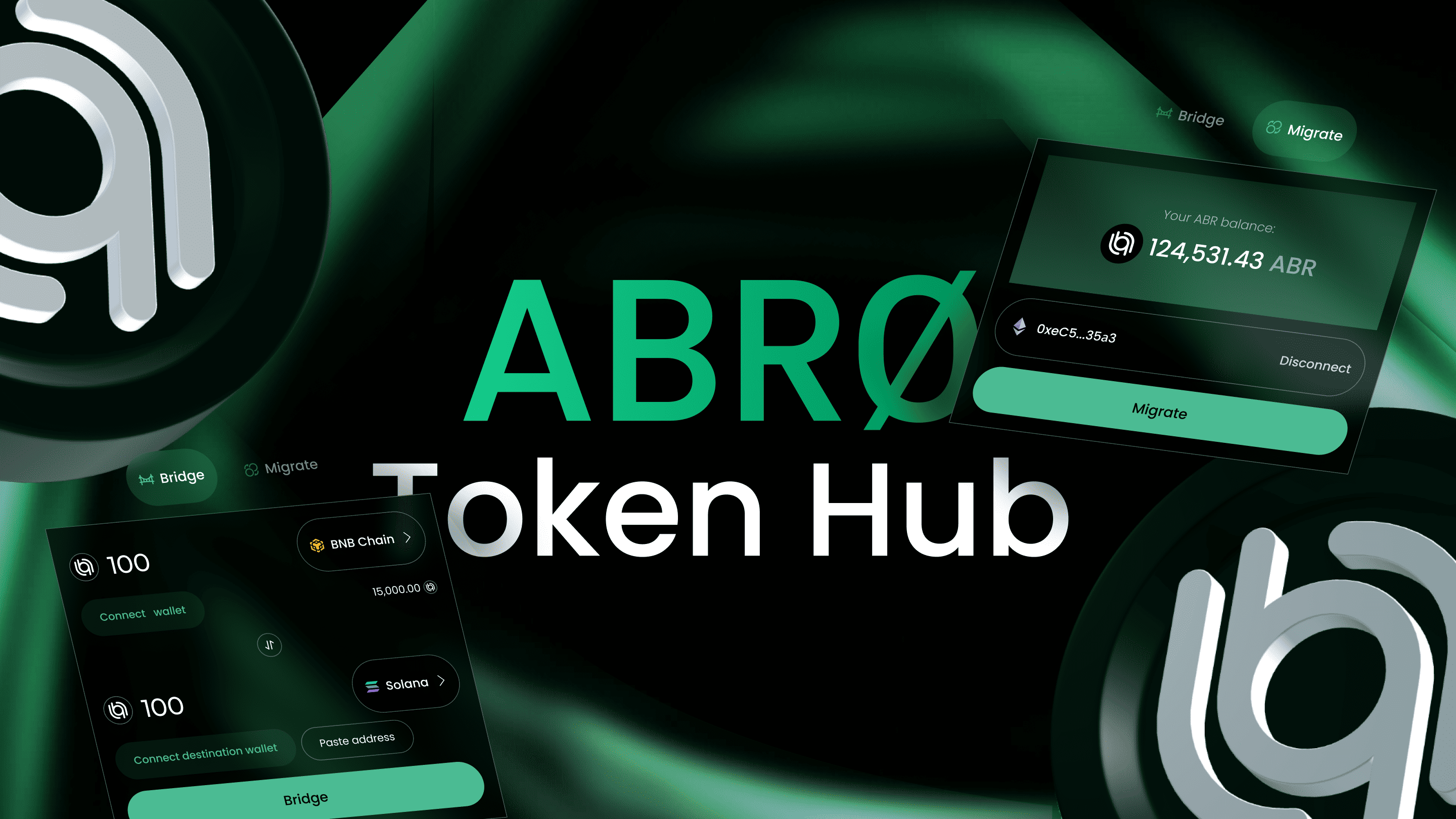
-0a4714b2-c0f8-4c92-a0ea-e47c5d800587.png)